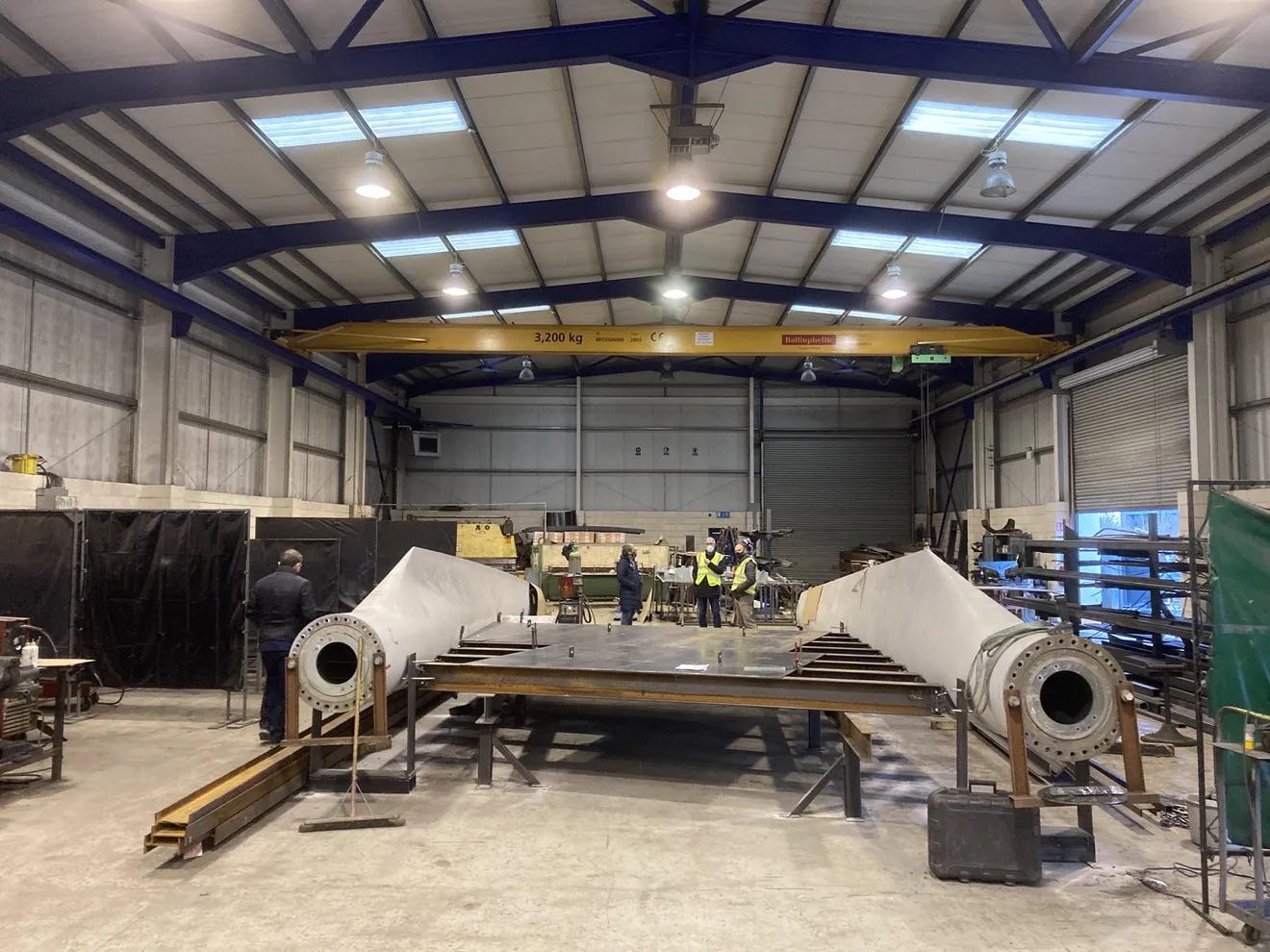
- Sustainable Planet -
- 7mins -
- 1,172 views
Building bridges with recycled wind turbine blades could help solve a major waste challenge
Engineers have installed bridges in Poland and Ireland made from decommissioned wind turbine blades, sparing the durable, lightweight, weatherproof giants from disposal by polluting incineration or languishing in landfills for millennia.
Could “blade bridges” be the beginning of a new trend in waste management?
In December, workers in Ireland excavated the rusted remains of an old railway bridge and installed a pedestrian one in its place. Located on a former train track bed connecting the towns of Midleton and Youghal in County Cork, the bridge might have been an unremarkable milestone in the development of a new pedestrian greenway through the Irish countryside, were it not for what it’s constructed from: upcycled wind turbine blades. That makes it just the second “blade bridge” in the world.
The first, installed last October in a small town in western Poland, officially opened in early January. The engineers and entrepreneurs behind these bridges are hopeful they represent the beginning of a new trend: repurposing old wind turbine blades for infrastructure projects.
Source: TheVerge
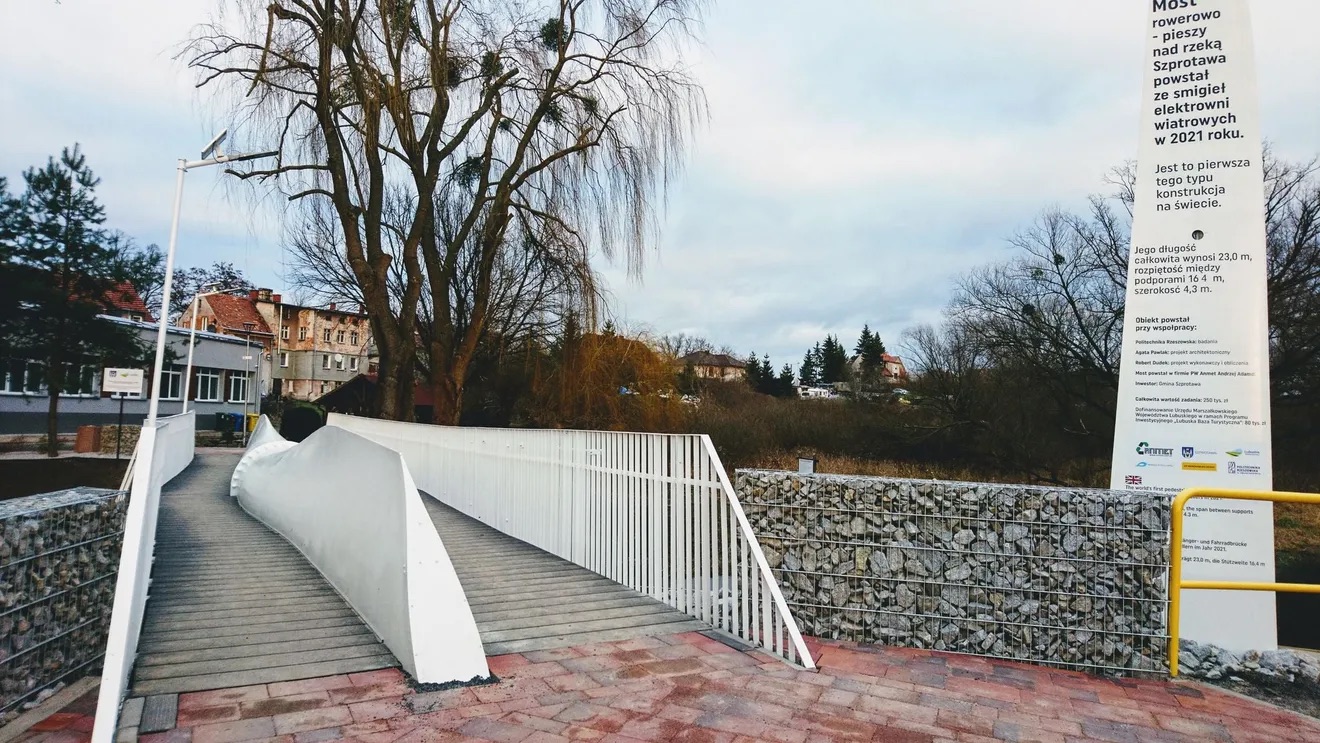
a potential solution to the problem of what to do with decommissioned turbine blades
Recycling company Anmet (Szprotawa, Poland) and partner GP Renewables Group (Warsaw, Poland) announced on 21 Oct. 2021 that it has installed its first pedestrian and bicycle footbridge with girders made from repurposed composite wind turbine blades. The bridge is the culmination of three years’ research and work, and the footbridge structure has been patented with plans for commercialisation.
According to Anmet, the concept is intended to serve as a solution to the problem of what to do with decommissioned turbine blades. Repurposing the blades in this way is said to serve as an alternative to either burying decommissioned blades or disposing of them using expensive or energy-consuming processes.
This solution, Anmet says, gives blades a second life and avoids the raw material consumption and emissions related to production of new construction materials. The design is also intended to draw public attention to the issue of closed-loop waste management and energy transformation toward green energy.
Founded by Andrzej Adamcio, Anmet has been providing services and solutions in the field of reuse and upcycling of blades for five years. It also provides blades cutting and recycling services for wind farm owners.
Adamcio worked with university and industry partners like GP Renewables and the Rzeszów University of Technology (Poland) on research to confirm wind blades as viable replacement materials for wood or metal on bridge girders.
Anmet now uses wind blades to build outdoor furniture (resulting in the Wings for Living brand) as well as bridges.
The footbridge was installed on Oct. 21 on the Szprotawa River. The research for this project was funded by the European Funds – Intelligent Development from 2014-2020 through Rzeszów University of Technology.
Source: CompositesWorld
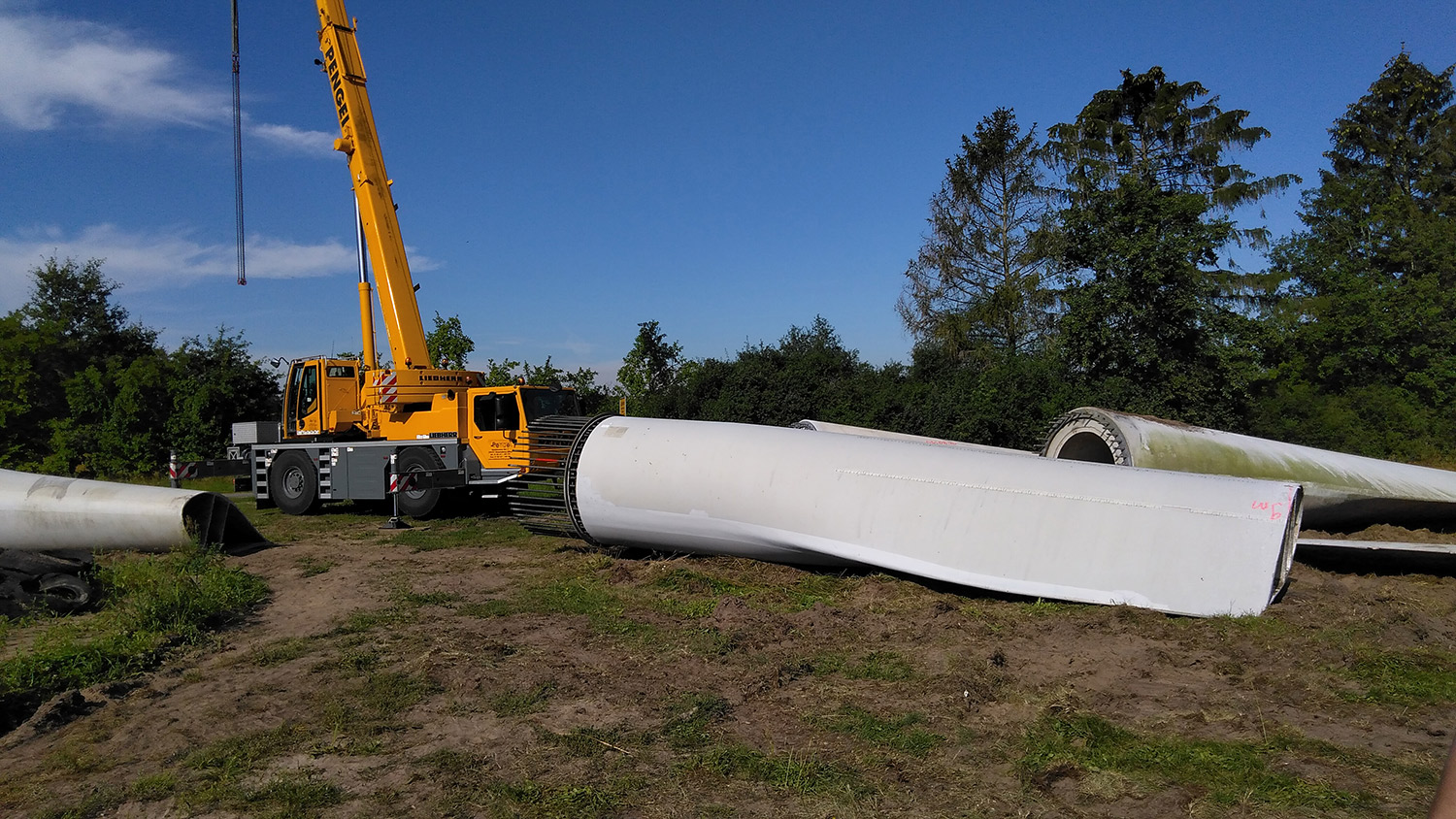
Blade bridges are cost-competitive and offer environmental advantages
The team behind the new Irish blade bridge believes they will be cost-competitive with more traditional bridges in addition to offering environmental advantages.
Angela Nagle, a civil engineering Ph.D. candidate at the University College Cork and a member of the ReWind network, says that by using blades decommissioned from a wind farm in Belfast, the team avoided nearly 800 kilograms (1764 pounds) of CO2 emissions that would have occurred had they used steel girders.
ReWind, she says, is exploring other ways to streamline production of future bridges, including through standardised design elements and by developing more efficient ways to evaluate the condition of used blades and “bucket them for various repurposing applications.”
Such efforts may be key to launching companies that can build bridges efficiently enough to turn a profit. According to Ruane, a major challenge in constructing these bridges is reverse-engineering the physical properties of the blades, which manufacturers typically consider proprietary information.
For ReWind’s first bridge, the team conducted nine months of engineering and materials tests to inform the bridge’s design. Whether future testing can be streamlined to save time and scale up production is “perhaps the key question in some respects,” Ruane says.
But Ruane is hopeful that as blade manufacturers and wind energy companies start to see structures like this out in the world, the repurposing market will “get more buy-in from the industry.” Ruane says he’s had preliminary conversations with a number of blade manufacturers that are “starting to get interested in what we’re doing.”
As blade bridge builders seek additional support from industries and governments alike, their first public constructions face a more imminent test: public opinion. While ReWind’s blade bridge won’t open until the spring when County Cork’s new greenway section is completed, Anmet’s bridge is already in use.
Sobczyk estimates that “80 to 90 percent” of the comments he’s received on the bridge have been positive, although some locals have found its appearance a bit strange.
Source: TheVerge
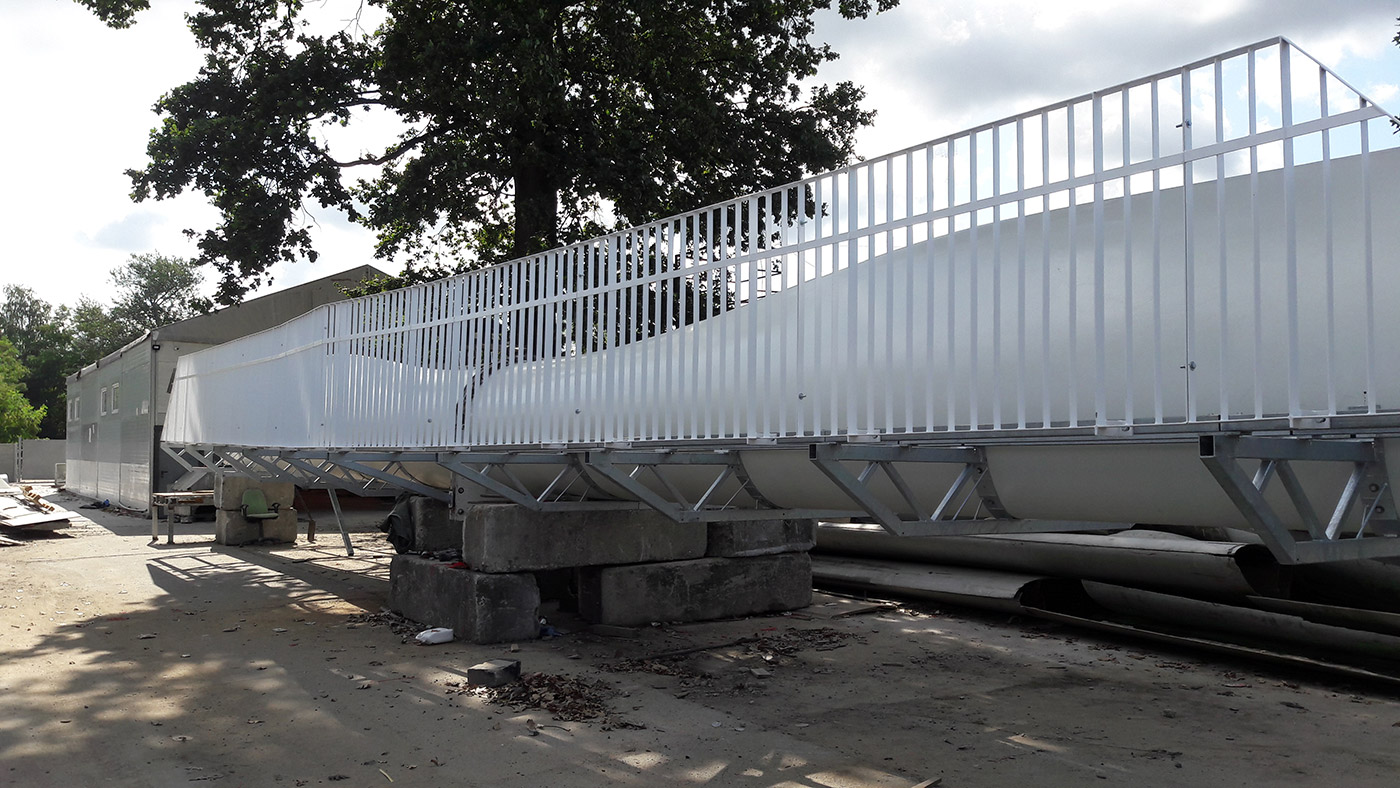
THE PROBLEM WITH WIND TURBINE BLADES ONCE RETIRED
A wind turbine’s blades can be longer than a Boeing 747 wing, so at the end of their lifespan they can’t just be hauled away. First, you need to saw through the fibreglass using a diamond-encrusted industrial saw to create three pieces small enough to be strapped to a tractor-trailer.
According to a recent report by Bloomberg Green, tens of thousands of aging blades are coming down from steel towers around the world and most have nowhere to go but landfills. In the U.S. alone, about 8,000 will be removed in each of the next four years.
Europe, which has been dealing with the problem longer, has about 3,800 coming down annually through at least 2022, according to BloombergNEF. It’s going to get worse: Most were built more than a decade ago, when installations were less than a fifth of what they are now.
Built to withstand hurricane-force winds, the blades can’t easily be crushed, recycled or repurposed.
Wind power is carbon-free and about 85% of turbine components, including steel, copper wire, electronics and gearing can be recycled or reused. But the fiberglass blades remain difficult to dispose of. With some as long as a football field, big rigs can only carry one at a time, making transportation costs prohibitive for long-distance hauls.
In the European Union, which strictly regulates material that can go into landfills, some blades are burned in kilns that create cement or in power plants. But their energy content is weak and uneven and the burning fiberglass emits pollutants.
Source: Bloomberg
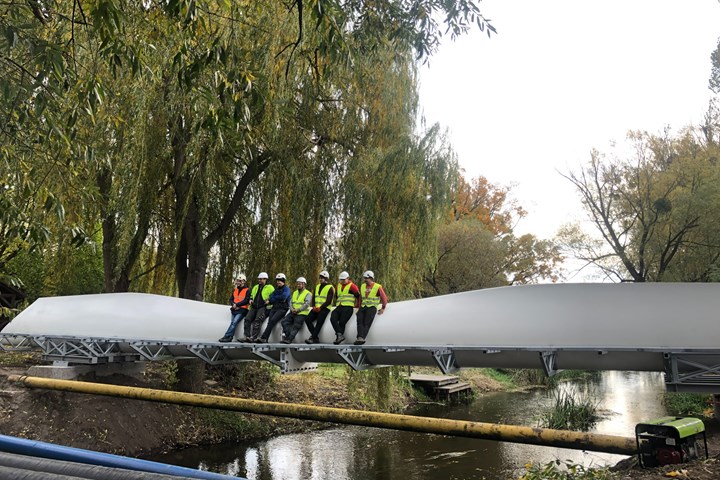
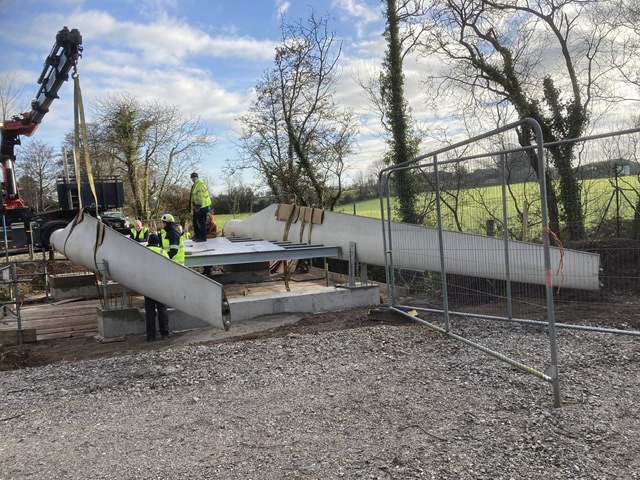
THE FULL RECYCLING CYCLE OF TURBINE BLADES INVOLVES SPLITTING AND RECYCLING BOTH FIBRE AND EPOXY
Danish wind turbine giant Vestas announced this week that it, along with a coalition of industry and academic leaders, has developed a process to fully recycle wind turbine blades.
In April, Electrek, the news and commentary site that tracks, analyses, and reports news on the transition from fossil-fuel transport to electric transport, reported that the University of Strathclyde in Glasgow and Norwegian offshore wind developer Aker Offshore Wind had worked out how to recycle glass-reinforced polymer composites (GRP) used in wind turbine blades:
Strathclyde’s Department of Mechanical and Aerospace Engineering developed a solution for thermal recovery and post-treatment process of glass fibers from GRP composites scrap to achieve near-virgin-quality glass fibres.
Now Vestas, along with Olin, an epoxy producer, the Danish Technological Institute, and Aarhus University in Denmark claims to have achieved a full recycling cycle of turbine blades by splitting and recycling both fibre and epoxy:
A coalition of industry and academic leaders have developed a new technology to enable circularity for thermoset composites, the material used to make wind turbine blades. The new technology delivers the final technological step on the journey toward a fully recyclable wind turbine value chain.
To enable the adoption of this new technology, and to advance a circular economy across the wind industry, a new initiative entitled CETEC (Circular Economy for Thermosets Epoxy Composites) has been established. Within three years, CETEC is aiming to present a fully scoped solution ready for industrial adoption, based on commercialisation of the novel circularity technology.
Source: Elektrek
